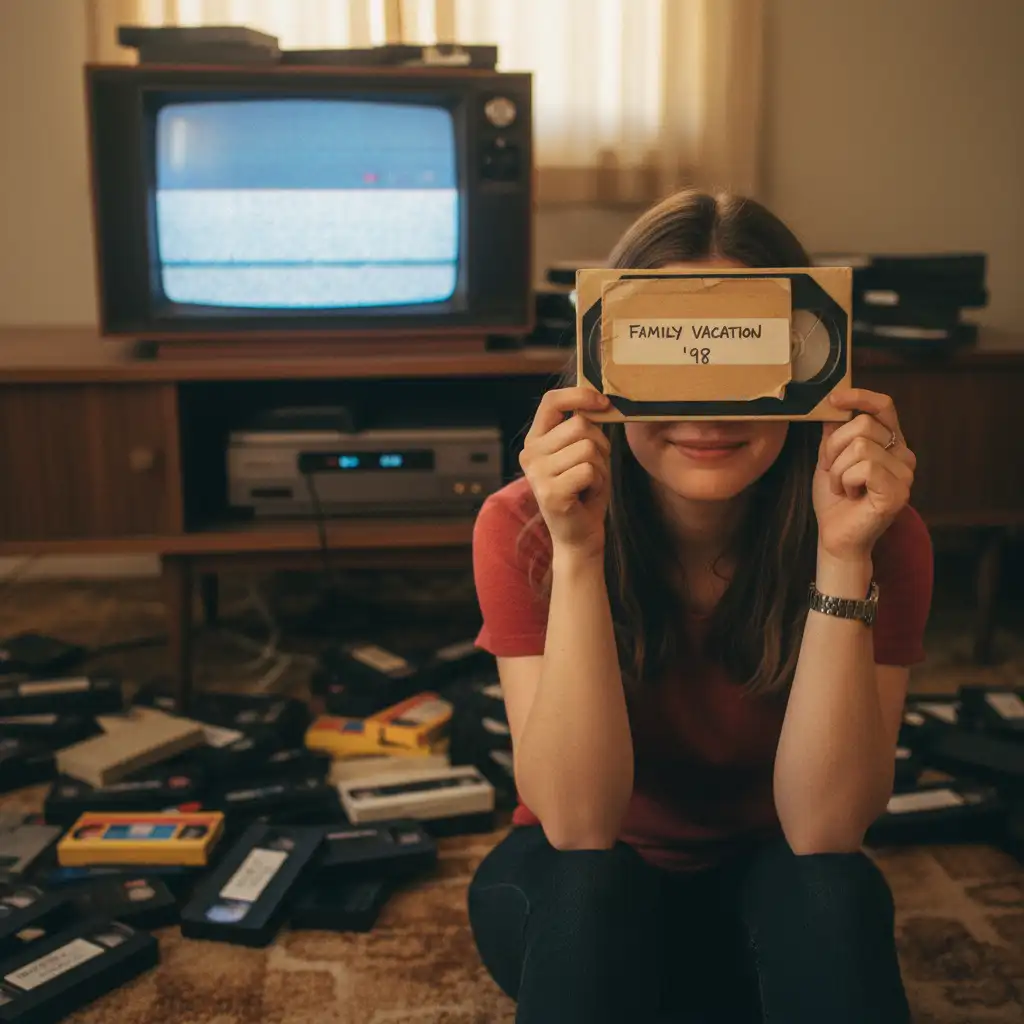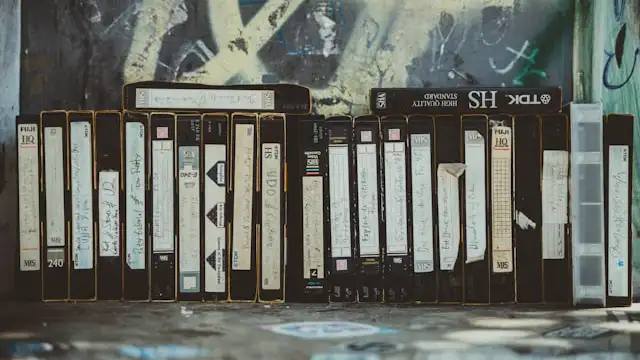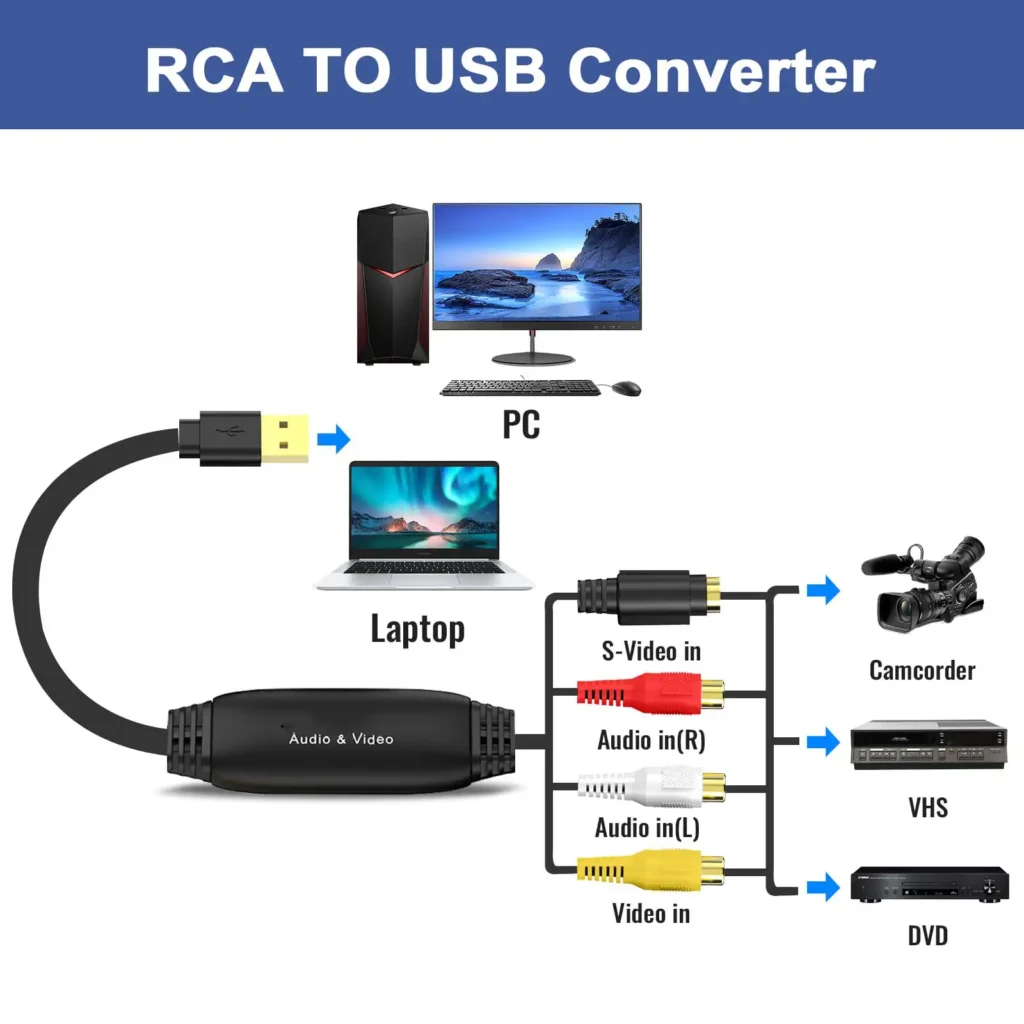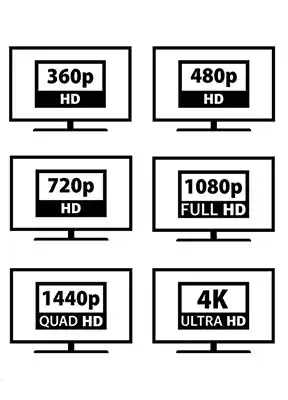
“One of them has my dad’s voice. I just want to hear it again.”
It started with a shoebox.
A client brought in a weathered cardboard box filled with VHS tapes—some labeled in faded ink, others blank but brimming with mystery. “I haven’t watched these in years,” she said, her voice soft. “One of them has my dad’s voice. I just want to hear it again.”
Moments like this remind us why Photo Restoration Rescue exists. We don’t just digitise tapes—we resurrect memory. We give families a way to see, hear, and feel moments they thought were lost to time.
Don’t Let Them Die
Digitising and Enhancing VHS Footage for a New Generation
Remember the days of clunky VCRs, rewinding tapes, and those precious home videos tucked away in a dusty cabinet? Converting old VHS tapes to a modern digital format is more than just a technical upgrade—it’s a way to save treasured memories from fading away. Many of us have boxes of tapes holding family events, weddings, holidays, and moments that time has been quietly erasing. VHS degrades over the years, losing quality and colour fidelity, but by digitising and enhancing, we can breathe new life into decades-old footage and even rescue accompanying photos.
Why Digitise? The Ticking Clock of Your Memories
Magnetic tape begins to deteriorate after 10–20 years. Colours fade, static lines appear, and audio distorts. Worse, the devices to play them are disappearing. By transferring VHS footage to a digital format, you:
Prevent further degradation.
Make them viewable on modern devices.
Easily back up and share with family and friends.

Step 1: VHS to Digital Conversion
The first step in restoring your old tapes is digitising them. We use professional-grade equipment to transfer your VHS footage into a digital format, preserving every frame safely.
Once digitised, your videos can be:
Played on modern devices (computers, TVs, smartphones)
Backed up to USB, cloud, or hard drives
Edited, shared, and enjoyed again
The VHS to Digital Process
Playback: Use a well-maintained VHS player or professional deck to ensure smooth capture.
Capture Hardware: Connect via a capture card that transfers analogue signals to your computer.
Software: OBS screen recorder or similar.
Digitisation: Record in a high-quality intermediate format.
Archiving: Save the original uncompressed files before starting any enhancements.
FAQ:
Can you digitise tapes with static or tracking issues? Yes. We use manual tracking and stabilisation tools to recover footage that might otherwise be unreadable.
What formats can I get my video in after conversion?
We provide digital files in MP4 (compatible with most devices), and we can also supply them on USB, DVD, or cloud storage — whichever suits you best.

Step 2: Upscaling to 4K
Upscaling—enhancing the resolution of video footage—is a crucial part of our restoration process. It can technically be done at two stages: either during the initial capture from VHS or after the footage has been digitised. At Photo Restoration Rescue, we choose to upscale after capture. Why? Because this allows us to work with a clean, stable digital file, giving us greater control over detail enhancement, noise reduction, and overall image quality.
Once the footage is digitised, we assess how best to present it for modern screens. For widescreen TVs, we decide whether to display the footage in full screen (cropping slightly to fill the frame) or in letterbox format (preserving the original aspect ratio with black bars on the sides). This choice depends on the content, composition, and how much of the original frame needs to be preserved for emotional or historical integrity.
FAQ:
Why not upscale during capture? Upscaling during capture locks in visual decisions too early. By waiting until after digitisation, we can fine-tune the enhancement and ensure the final result is both technically sound and emotionally resonant.
Can I choose between full screen and letterbox? Absolutely. We’ll show you both options during the proofing stage so you can decide what best suits your viewing needs and legacy goals.

Step 3: Enhancing 576p to 4k
Beyond just upscaling, dedicated video enhancement techniques can tackle common VHS issues like colour fading, noise, and instability, transforming your footage into something truly remarkable. This is where “photo restoration rescue” comes into play – treating your video frames with the same meticulous care you’d give an old photograph.
Common Enhancement Techniques:
Colour Correction and Grading: Restore faded colours, correct white balance, and give your video a more pleasing aesthetic.
Noise Reduction: Minimize the grainy appearance inherent in VHS footage.
De-interlacing: VHS records in an interlaced format, which can cause “combing” artifacts on modern progressive displays. De-interlacing converts this to a smooth progressive scan.
Stabilization: If your home videos were shot with shaky hands, video stabilization can smooth out the motion.
Sharpening and Detail Enhancement: Further refine edges and bring out subtle details that were previously soft.
FAQ:
Can you fix damaged or partially recorded tapes? In many cases, yes! We can often recover and stabilise damaged segments, adjust sound sync issues, and improve overall watchability.
How long will my digital files last? Digital files, when properly backed up and managed, can last indefinitely. The key is redundancy and migrating to new storage technologies as they emerge.
📚 Frequently Asked Questions
Can you digitise damaged or glitchy VHS tapes?
Yes. We use professional-grade equipment with time-base correction and manual tracking to stabilise playback and recover footage—even from tapes with static, dropouts, or tracking issues.
Will my footage look modern after upscaling to 4K?
It will look clearer and more refined, but we preserve the original character. Our upscaling enhances detail and reduces noise without making the footage feel artificial or overprocessed.
Do you clean up audio as well?
Absolutely. We apply audio restoration tools to reduce hiss, hum, and muffled voices. While results vary depending on the tape’s condition, we aim to make voices and ambient sounds more intelligible and emotionally resonant.
Can I choose between full screen and letterbox playback?
Yes. We’ll show you both options during the proofing stage. Full screen fills the TV frame but may crop edges slightly, while letterbox preserves the original aspect ratio with black bars.
Do you support international formats like NTSC or SECAM?
We do. Our equipment handles PAL (Australia), NTSC (North America), and SECAM (Europe), and we can convert footage to match your preferred playback format.
How long does the restoration process take?
Typically, 3–5 business days depending on tape condition and project complexity. We’ll send a proof version for your approval before final delivery.
What do I receive at the end of the process?
You’ll receive a high-resolution digital file usually as an mp4 format (suitable for playback, archiving, or editing).
Can you create a highlight reel or tribute montage from multiple tapes?
Yes. We offer custom editing services to combine footage, add music, captions, and transitions—perfect for memorials, anniversaries, or family celebrations.
Is there a risk of losing the original tape during the process?
We treat every tape with care and reverence. Originals are never altered, and we return them safely after digitisation. If a tape is fragile, we’ll discuss handling options with you first.
How do I get started?
Simply contact us and send or drop off your VHS tapes. We’ll guide you through the quoting, digitisation, proofing, and delivery process with transparency every step of the way.
